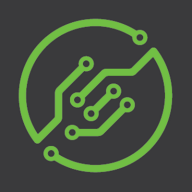

Stackify and Evanios compete in IT and DevOps monitoring. Evanios appears to have the upper hand due to its advanced features and integration capabilities, despite higher costs, making it a comprehensive solution for many buyers.
Features: Stackify offers robust application performance monitoring, error tracking, and real-time metrics, providing log management for detailed insights. Evanios focuses on event management with automation, predictive analytics, and service integration, ensuring broader operational insights and seamless system integration for a holistic view.
Room for Improvement: Stackify could enhance its integration with third-party tools, expand its feature set for large enterprise-level monitoring, and improve its scalability for growing data demands. Evanios might consider streamlining its deployment process, enhancing its user interface for intuitiveness, and offering more flexible pricing models to cater to budget-conscious customers.
Ease of Deployment and Customer Service: Stackify provides a straightforward deployment process with an easy-to-use platform designed for quick integration without complex configurations and responsive customer service. Evanios, while offering a more detailed deployment process due to its extensive capabilities, benefits from dedicated support that ensures efficient onboarding.
Pricing and ROI: Stackify offers competitive pricing with lower initial setup costs, making it appealing to smaller teams or those with limited budgets, and delivers a notable ROI due to efficient problem resolution. Evanios, though priced higher, justifies the cost with a substantial ROI attributed to its extensive features and long-term operational efficiencies, seen as a valuable investment for larger enterprises.
| Product | Market Share (%) |
|---|---|
| Stackify | 0.3% |
| Evanios | 0.2% |
| Other | 99.5% |

| Company Size | Count |
|---|---|
| Small Business | 3 |
| Midsize Enterprise | 2 |
| Large Enterprise | 2 |
A key component of the Event Management process is consolidation of events from across the enterprise. By consolidating disparate events into a single solution, they can be de-duplicated and correlated. For example, network failure events can be correlated with system failures, and then prioritized based on service impact.
Reduce the noise
Evanios Integrations allows filtering and processing close to the event source, keeping the weight off of the ServiceNow system for increased performance. Filters are easily configured. EVA, the Evanios consolidation point also has built in event flood control features, to protect against unexpected event storms which can quickly overload traditional integrations.
Stackify is an application performance management (APM) solution that combines application performance monitoring with logs, errors, and reporting. It is a SaaS solution that is developer-focused. Users can quickly scan, identify, and repair issues with applications. Stackify APM offers valuable tools, such as Prefix and Retrace, which help to make it a comprehensive and valuable APM solution. Stackify is now part of the Netreo family of IT Infrastructure Management (ITIM), which is considered one of the fastest-growing IT organizations in the marketplace today.
Stackify Prefix
Stackify Prefix helps developers write better code, faster. The tool examines, tests, and approves code as it is being written. Almost every new application is code-perfect, negating the need for exhausting troubleshooting and frustrating time-consuming code review.
Prefix is able to discover poor-performing SQL queries, ORM queries, potential bottlenecks, and concealed exceptions prior to moving the application into production.
Prefix offers Summary Dashboards, intuitive suggestions, integrated logs, and distributed tracing. Distributed tracing expands visibility to cloud-native applications, microservices, and containers and can also provide additional transparency to cache services, web services, third-party services, and more. Users are able to easily move from logs to traces and back.
This valuable tool ensures developers are able to consistently release the best code possible in the least amount of time, while improving performance, productivity, and profitability.
Prefix is a very robust and easy-to-use tool. It can be used seamlessly with Linux, macOS, and Windows. Prefix integrates well with numerous languages, such as Java, Python, Ruby, PHP, Node.js, .Net, and .Net Core.
Stackify Retrace
Stackify Retrace is a user-friendly, trusted APM solution used in more than fifty countries worldwide. Users know that Retrace is able to ensure they can complete quicker, more efficient application development and consistently enhance overall application performance by suggesting important intuitive suggestions users need.
This solution is beneficial to both developers (Dev) and operations (Ops) personnel to learn to improve code and immediately finetune issues by:
Retrace Real User Monitoring (RUM) uses both front-end and back-end monitoring to give users a complete picture of what is going on with the applications. This intuitive dashboard displays performance with a complete breakdown of resource usage and integrates the server-side and client traces into one engaging, user-friendly, extensive view.
Retrace is an out-of-the-box solution that works seamlessly with Java stacks, PHP, Node.js, Ruby, Python, .Net, and .Net Core. It is also compatible with many of today’s popular frameworks, such as AWS, Azure, Elasticsearch, MongoDB, MySQL, Oracle, PostgreSQL, Redis, and SQL Server. Additionally, Retrace will work effectively with many cloud providers, containers, and languages, and offers excellent and easy integration with today's favorite tools such as Jira, Slack, Jenkins, and more.
We monitor all IT Infrastructure Monitoring reviews to prevent fraudulent reviews and keep review quality high. We do not post reviews by company employees or direct competitors. We validate each review for authenticity via cross-reference with LinkedIn, and personal follow-up with the reviewer when necessary.